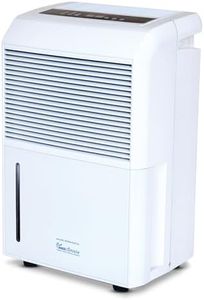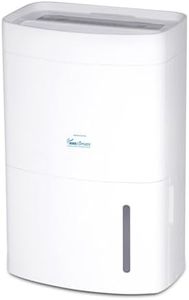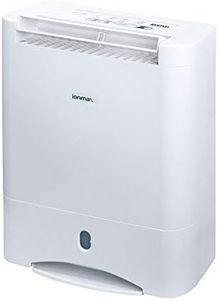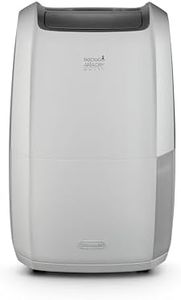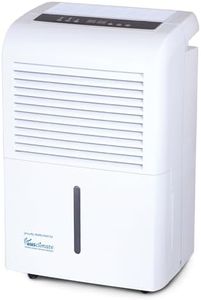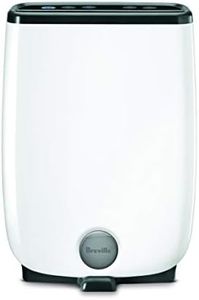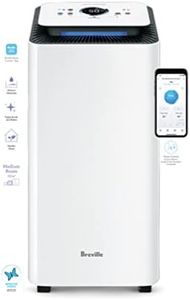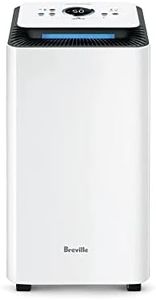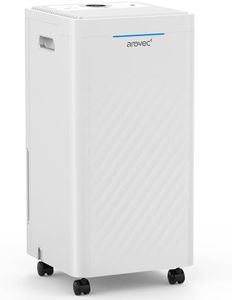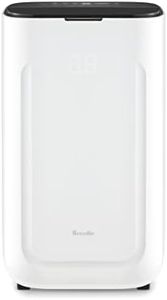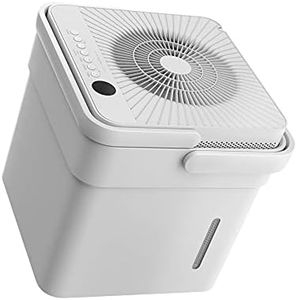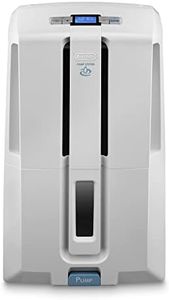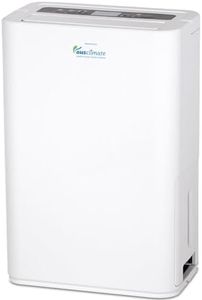We Use CookiesWe use cookies to enhance the security, performance,
functionality and for analytical and promotional activities. By continuing to browse this site you
are agreeing to our privacy policy
10 Best Basement Dehumidifier
From leading brands and best sellers available on the web.Buying Guide for the Best Basement Dehumidifier
Choosing the right basement dehumidifier can greatly improve the comfort, health, and longevity of your basement space. Basements often suffer from high humidity, which can lead to mold, mildew, and even structural damage over time. When selecting a dehumidifier for your basement, it's important to understand the specs that matter most so you can find one that best fits your room size, typical humidity level, and how you plan to maintain the device.Dehumidification CapacityDehumidification capacity tells you how much moisture the device can remove from the air in a 24-hour period, usually measured in pints or liters. This is important because a dehumidifier that's too small won't remove enough moisture, while one that's too large may use more energy than necessary. Smaller basements or spaces with mild moisture might do well with lower capacity (20-30 pints per day), while large or very damp basements often need higher capacities (50 pints per day or more). To pick the right size, consider both the size of your basement and how damp it typically feels. Manufacturer guidelines often provide helpful charts to match room size and humidity to the right capacity.
Coverage AreaThe coverage area specification tells you the maximum square footage the dehumidifier is designed to handle. This is key because using a dehumidifier rated for smaller spaces in a large basement will be ineffective. Units are often segmented by small (up to 800 sq ft), medium (800-1500 sq ft), and large (over 1500 sq ft) spaces. Measure your basement and choose a dehumidifier with a coverage area at or above your space requirements, especially if you have an open-plan basement or high ceilings.
Water Tank Capacity and Drainage OptionsThe water tank capacity specifies how much water the dehumidifier can collect before you need to empty it. A bigger tank means less frequent emptying, which is convenient if you don’t want to check it daily. Typical tanks might hold 1-2 gallons. However, many basement dehumidifiers also offer continuous drainage options, such as a hose attachment to direct water to a drain or sump pump, which is ideal for basements with ongoing moisture issues. If your basement deals with a lot of water or you don’t want to empty the tank regularly, look for models with these drainage features.
Auto Restart and Auto Defrost FunctionsAuto restart means the dehumidifier will turn back on with its previous settings after a power outage, which is important for basements where access might be limited. Auto defrost prevents the coils from freezing in cooler environments, enabling the dehumidifier to work efficiently in basements that get cold. If your basement is in an area with lots of storms or loses power often, or if it is unheated or partially heated, look for these features to ensure reliable operation.
Humidistat and ControlsA built-in humidistat lets the dehumidifier automatically turn on and off to maintain your selected humidity level. This avoids wasted energy and helps keep the basement consistently comfortable. Some dehumidifiers offer digital controls and displays, while simpler models use manual dials. If you want a set-and-forget experience or have specific humidity goals (like protecting stored items or preventing mold), a dehumidifier with a precise humidistat and clear controls will be very useful.
Noise LevelThe noise level, measured in decibels (dB), shows how loud the machine will be while running. This is more important if your basement is used as a living space, office, or home gym, but less so for storage or utility spaces. Lower noise values (typically below 50 dB) are considered quiet. If you spend time in your basement, you’ll appreciate a quieter dehumidifier.
Filter Type and MaintenanceMost dehumidifiers use an air filter to trap dust and other particles, which needs regular cleaning or replacing. Some have washable filters that are easy to maintain, while others may require periodic replacement. Frequent filter maintenance keeps your dehumidifier running efficiently. If easy maintenance is important to you, look for a model with clearly accessible, washable filters and check how often maintenance is recommended.
